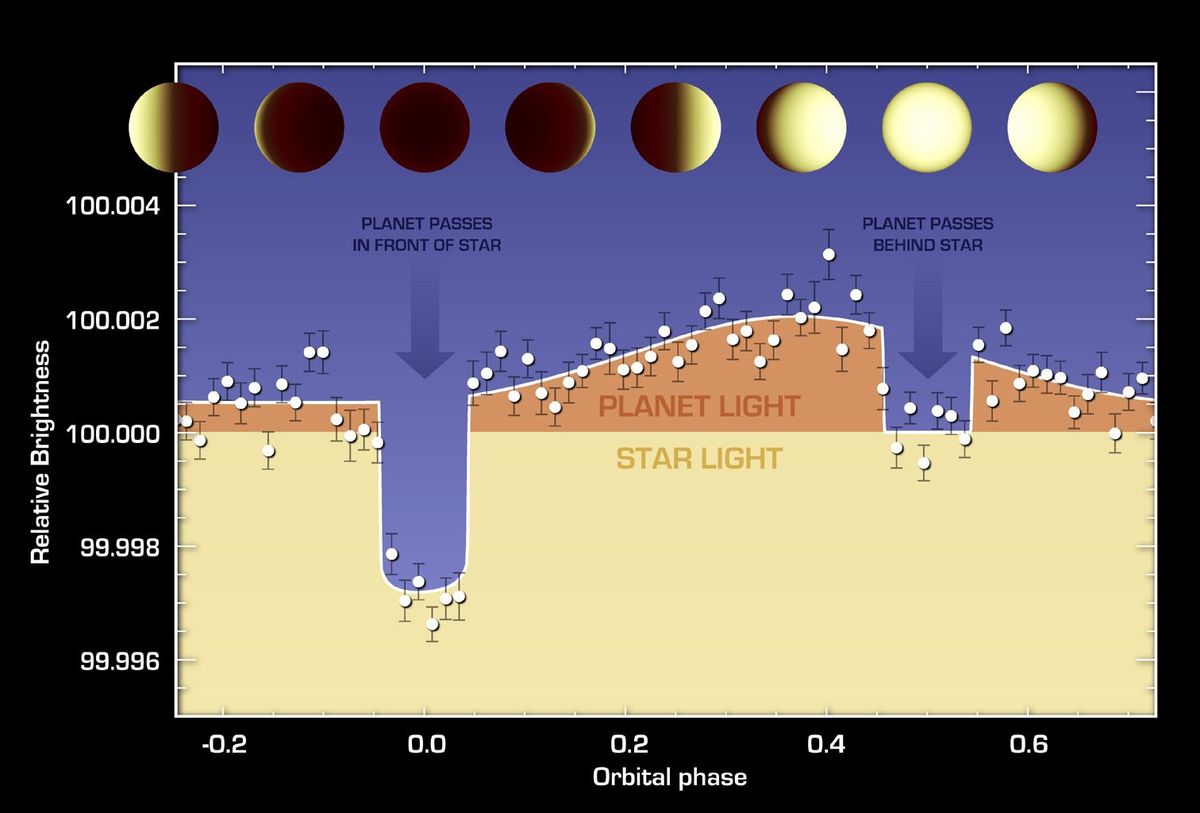NASA’s Spitzer Space Telescope has recently mapped the surface temperatures of a “super-Earth,” giving us a rare glimpse into the environmental and weather conditions on a distant extrasolar planet.
The exoplanet in question is called “55 Cancri e”— one of five exoplanets discovered orbiting the star 55 Cancri, about 40 light years away in the constellation Cancer. Of the five, “e” is the smallest — though still weighs in at about 8 times the mass of the Earth, and twice the diameter.
55 Cancri e is about 25 times closer to its star than Mercury is to our sun. At this tight distance it takes less than 18 hours to revolve once around its star — so, 55 Cancri e’s year is shorter than a day on Earth!

Since the planet is so close to its star, its rotation is most likely “locked” by gravitational tidal forces, so that the same side always faces the star — not unlike how the Moon is tidally locked to the Earth, always presenting the same face to us.
Spitzer made observations of the super-Earth over several revolutions, which has allowed it to map heat variations over the entire surface (night side and day side) multiple times. This map has revealed some remarkable things about 55 Cancri e.


